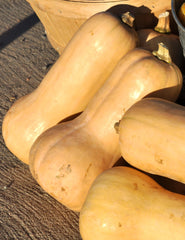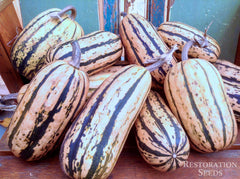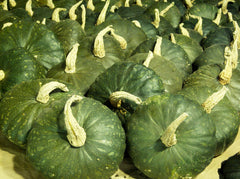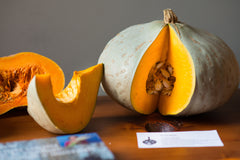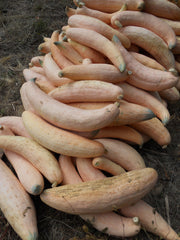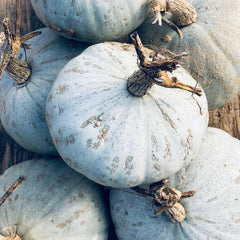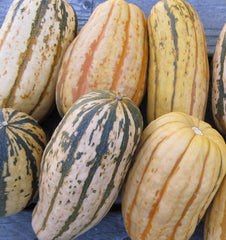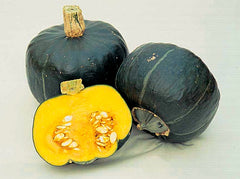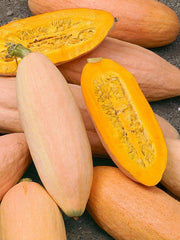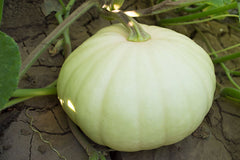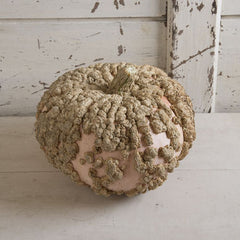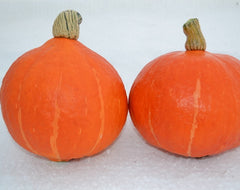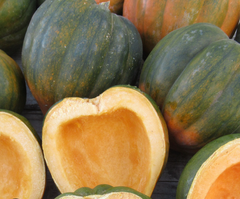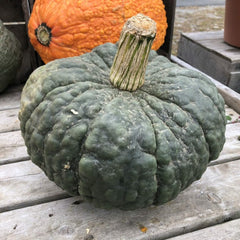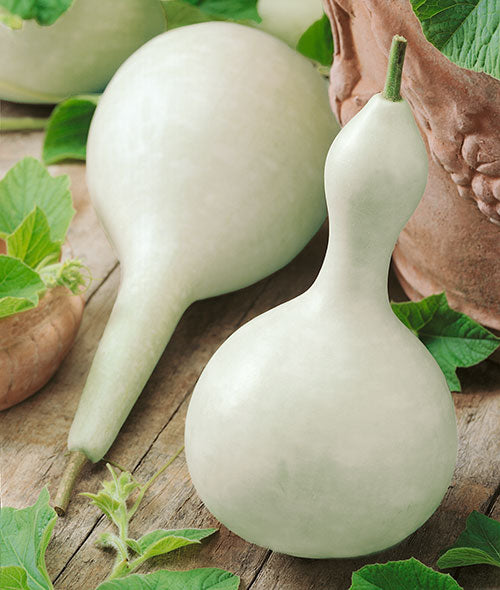Hopi Rattle
Lagenaria siceraria
HOW TO GROW GOURD
Start indoors 4-6 weeks before last frost, sow 2-3 seeds per pot, thin to strongest plant, plant out after last frost. Start with bottom heat like tomatoes. Plant in hills of fast-draining soil. Water sparingly. Once the fruit attains full size, twist the stem to encourage early maturation and drying. Harvest after first frost. Climbing plant, can be used as a fast growing summer screen. Disease resistant. Some say to discard seeds that do not germinate after 10 days because they will not be vigorous enough to succeed outdoors. Prefers heavy fertility. Harvest with as much stem as possible, remove when dried. Soil pH 5.6-7.5. Hardiness zones 5-10. Annual.
Days from maturity calculated from the date of seeding. Average 140 seeds per ounce. Federal germination standard: 75%. Usual seed life: 6 years. Isolation distance for seed saving: 1/2 mile.
Planting Depth 3/4-1”
Soil Temp. Germ. 68-77˚F
Days to Germ. 10-14
Plant Spacing 24-36”
Row Spacing 36-48”
Days To Maturity 100-150
Full Shade, Moist Well Drained Soil
Days from maturity calculated from the date of seeding. Average 140 seeds per ounce. Federal germination standard: 75%. Usual seed life: 6 years. Isolation distance for seed saving: 1/2 mile.
Planting Depth 3/4-1”
Soil Temp. Germ. 68-77˚F
Days to Germ. 10-14
Plant Spacing 24-36”
Row Spacing 36-48”
Days To Maturity 100-150
Full Shade, Moist Well Drained Soil
- 20 Seeds$4.10
Hopi ceremonial dance rattle, grows 4-6” long. These produce fruits that are either flattened like a bowl gourd or with a single bulbous appendage where the stem attaches. Traditionally, the gourds are cured by hanging beneath the eaves and scraped to remove any mold. Seeds and pith are removed through a small hole....
Hopi ceremonial dance rattle, grows 4-6” long. These produce fruits that are either flattened like a bowl gourd or with a single bulbous appendage where the stem attaches. Traditionally, the gourds are cured by hanging beneath the eaves and scraped to remove any mold. Seeds and pith are removed through a small hole. A handful of beads, peas, corn, or small rocks are introduced through the hole which is later patched. The gourd is then pierced through with a carved stick. In the case of bulbous form, the bulb is oriented up. In the case of flattened form, the stick is often pierced through the sides, looking like a giant chunk of potato on a skewer. Resembles Acoma Rattle but with a scar on the bottom. Large gourds can be used to make woman’s rasp instruments. Immature fruit are cooked as a vegetable, steamed, boiled, fried, used in curries or made into fritters. Leaves or shoots are edible. Pulp is purgative, antibiotic activity, poultice of crushed leaves applied to head for headaches. Also known as Calabash from Spanish calabaza. Tags: Type: Gourd, Color: White, Heritage: Heirloom,New Listing, Certification: Organic.
Cultivated in the Americas for thousands of years. Spread from wild populations in southern Africa.
Cultivated in the Americas for thousands of years. Spread from wild populations in southern Africa.
Learn More
Reviews
